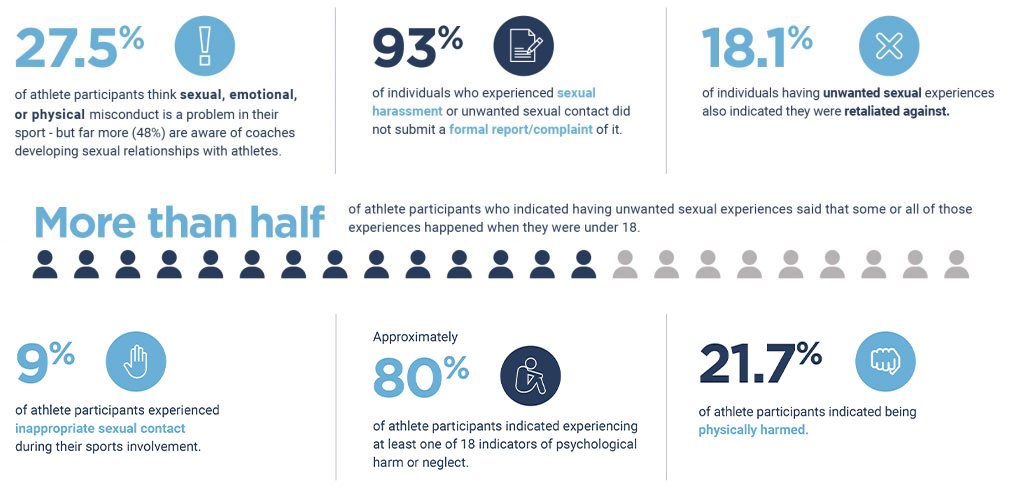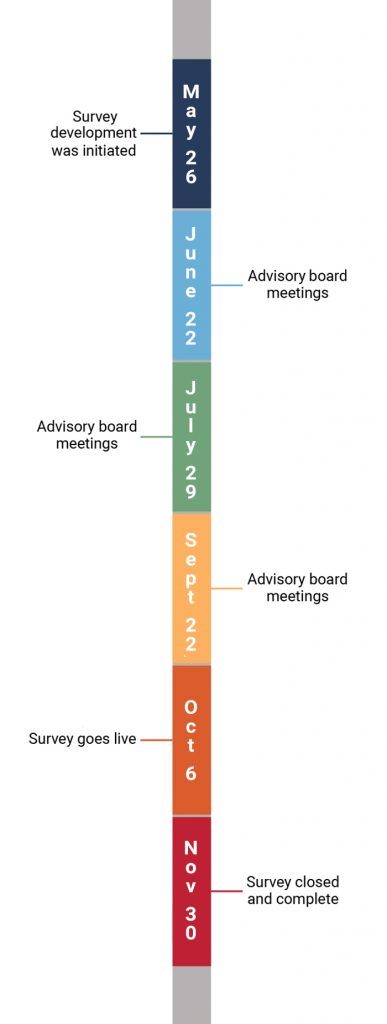2020 Athlete Culture & Climate Survey
Updates made on Jan. 25, 2022
2020 Athlete Culture & Climate Survey
A WORD FROM OUR CEO
On this and associated pages, you’ll see key findings from the U.S. Center for SafeSport’s 2020 Athlete Culture & Climate Survey, as well as links to the survey report and related resources.
Reflecting responses from nearly 4,000 adult athletes in more than 50 sports, this survey provides the most in-depth look to date at the landscape of sexual, physical, and emotional abuse of athletes in the U.S. Olympic and Paralympic Movement.
This survey is the Center’s first foray into collecting Movement-wide data to better understand athlete experiences and the extent of abuse in sport. The results establish data baselines to help the Center develop benchmark goals, against which progress will be measured, and will inform specific actions and initiatives to promote better, safer sport cultures, and will align with elements of the Center’s 2021-23 Strategic Plan.
The anonymous survey was administered by our partners at the Institute to Promote Athlete Health & Wellness at the University of North Carolina at Greensboro.

Ju’Riese Colón
Chief Executive Officer of the U.S. Center for SafeSport
Key Findings


Methods and Timeline
The targeted sample for data collection included current and former athletes across all levels of the United States Olympic and Paralympic Movement who are 18 years of age or older. Participants were engaged from the 55 NGBs/PSOs and invited to complete the survey via an anonymous Qualtrics survey link. The online, self-administered, anonymous survey was open online from October 6 to November 30, 2020. Athletes were provided with links too report a concern to the Center if they chose to after taking the survey, and with support information through an anonymous hotline partnership with the Rape, Abuse and Incest National Network.
An anonymous survey link and promotional tools to support consistency were shared with athlete representatives (AAC, SAAT, USOPA), NGBs, PSOs, and the USOPC. NGBs and PSOs independently invited athletes using their own methods of recruitment (e.g., website promotion, email, social media). Athletes were also recruited to participate through an announcement on the Center’s website and an email from the CEO of the Center. Additional recruitment and reminders for this study were sent by the Center.


Glossary
Sexual Harm is used synonymously with the term “unwanted sexual experiences” throughout this report. Sexual harm was measured using 12 survey questions that assessed a range of experiences including sexual harassment, unwanted sexual contact and non-contact behaviors, and sexual assault. For each item, athlete participants were asked to think only about unwanted experiences that occurred during their involvement in sport.
Inappropriate sexual contact is a term used in this report to refer to unwanted sexual touching, kissing, or sexual exploitation; it does not include sexual assault or attempted sexual assault (which were assessed separately). Inappropriate sexual contact was measured using four survey items that were included in the 12-item Sexual Harm scale. For each item, athlete participants were asked to think only about unwanted experiences that occurred during their involvement in sport.
Sexual assault is defined in this report as the experience of non-consensual sex with penetration. Sexual assault was measured using a single item within the 12-item Sexual Harm scale. For this item, athlete participants were asked to think only about unwanted experiences that occurred during their involvement in sport.
Psychological harm is a term used in this report to describe emotionally harmful and/or neglectful interactions that occurred within the sport setting. Psychological harm was measured using 18 survey items that assessed a range of experiences including being yelled at, humiliated, pressured, not having basic needs met, and more.
